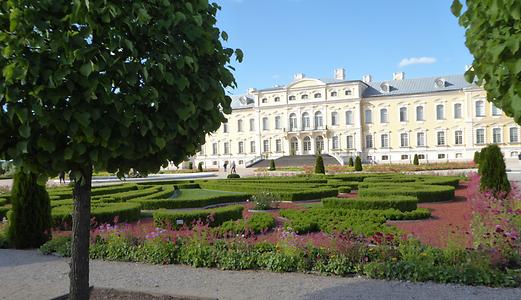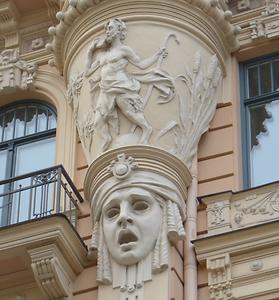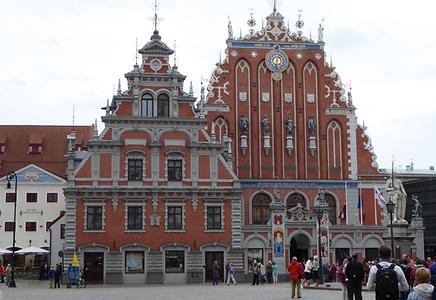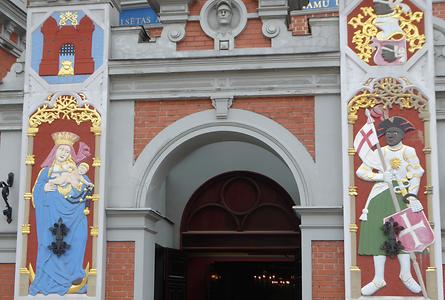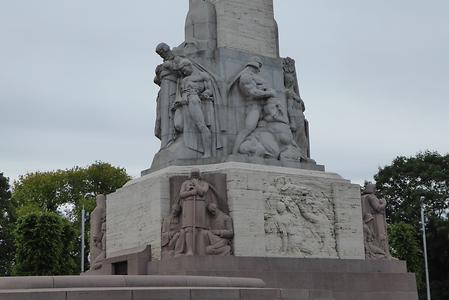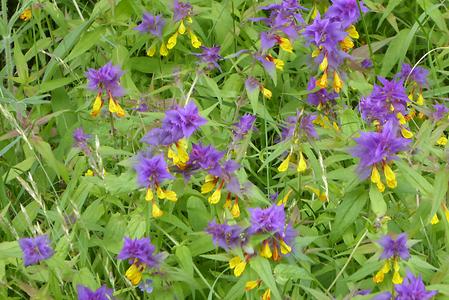Some impressions of Latvia#
by H. MaurerIntroduction #
Latvia is bordered by Estonia to the north, Lithuania to the south, Russia to the east, and Belarus to the southeast, as well as a maritime border facing Sweden. Latvia has about 2 million people on 64,589 km2.Latvia is a democratic parliamentary republic established in 1918. The capital city is Riga, the European Capital of Culture 2014. Latvian is the official language: it and Lithuanian are the only two surviving Baltic languages. Despite foreign rule from the 13th to 20th centuries, the Latvian nation maintained some identity throughout the generations via the language and musical traditions. As a consequence of the Soviet occupation, Latvia is home to a large number of ethnic Russians (about 27 %).
Latvia is historically predominantly Protestant Lutheran, quite contrary to catholic Lithuania, with the Russian population mainly being Eastern Orthodox Christians.
The Republic of Latvia was founded in 1918. However, its independence was interrupted with World War II. In 1940, the country was forcibly incorporated into the Soviet Union, invaded and occupied by Nazi Germany in 1941, and re-occupied by the Soviets in 1944 for the next fifty years. It ended by the restoration of independence on August 21, 1991.
The trip#
Coming from Lithuania we crossed the border near the castle of Rundale (first set of pictures), then continued to the capital Riga (second set of pictures) and then went on a hike in Gauja National Park (third set of pictures), crossing into Estonia by first reaching Tartu. Rundale, Riga, Gauja, Tartu .Rundale#
In 1735 Duke of Courland Ernst Johann von Biron bought land in Rundāle with an old medieval castle in the territory of a planned summer residence. The old castle was demolished and construction after the design of Bartolomeo Rastrelli started in 1736. Following Biron's fall from grace in 1740, the palace stood unfinished and empty until 1762 when Biron returned from his exile. Under the supervision of Rastrelli its construction was finished in 1768. Johann Michael Graff produced lavish stucco decorations for the palace during this time. In the pictures to follow we only show the castle from the ouside and the impressive gardens, famous for roses of all colours.Riga#
Riga with about 650.000 inhabitants is the largest Baltic city. It is loated at the mouth of the river Daugava. Riga was the European Culture city in 2014 (together with Umea in Sweden). The old city center with its many Art Nouveau (Jugendstil) houses and many other impressive buildings, often with a remarkable history, are the reason why it is UNESCO world heritage.Art Nouveau architecture was particualr popular in Riga during the late 19th century and the beginning of the 20th century. The most popular style in Riga is known as "Romantic" Art Nouveau. Simplistic and modern in form, these buildings were decorated with elements from other historic styles and constitute about one-third of all buildings in central Riga.



The square with the city hall is particularly famous for the house opposite the city hall: The building was erected during the first third of the 14th century for the Brotherhood of Blackheads, a guild for unmarried German merchants in Riga. Major works were done in the years 1580 and 1886, adding most of the ornamentations. The building was completely destroyed during World War II and by the Soviets in 1948. The current reconstruction was built between 1995 and 1999.
The old part of Riga is on the right bank of the Daugava river but a modern bridge leads now to a newer part of Riga with important builidings.
Of course Riga has much more to offer. A few examples might be a visit of the cathedral, the parks, the statue of liberty, or views from the 26 th floor of a building onto the old city.
Hike in Gauja National Park#
The hike along the Gauja river shows gentle scenery and many caves. One of the caves, Gutmana cave, is associated with the legend of the Rose of Turaida. A guy Jakubovsky fell in love with the girl Maja (the Rose of Turaida) but she was in love with someone else. Jakubovsky lured her in a cave on some pretext, threw her to the ground and threatend to rape her. Maja begged him to let her go: she would give him a magic scarf that protects the wearer from any injury. He did not believe this story, but she offered him to wear the scarf and he could srike her with his sword. He agreed and viciously struck her with his sword, killing her: Maja had prefered to be killed rather than to live in shame.








